Definitely not a viable near future human social practice, especially with gas approaching its inevitable $5 USD per gallon prices, here in the US. This non-staged dog driving was seen recently in Lima Peru in the Barranco district, which reminds me of New York City’s Upper East Side (aka “Planet of the Apes” bizzarro land), only on the ocean. It’s a desirable, fancy district with new tall apartment buildings, lots of ground-floor security operatives, clean and well-manicured. Very quiet area compared to the rest of Lima which is as noisy as it can be — lots of cars honking as a matter-of-course, belching incredible amounts of exhaust fumes, general bedlam, basically. While wondering about, I saw this zaniness while basically waiting for a red-eye back to the US. I am not really sure exactly how to make sense of this peculiar dog driving practice.
What is most curious is that I first saw this car-dog-human hybrid and, as slow as they were going (no more than 5 miles per hour) I couldn’t get my camera out and change to an appropriate lens quickly enough, so I missed the shot. Somehow I knew they’d be coming back if I kept walking along this road and, sure enough — here they are. It was barely drizzling, so I can’t say that this is what lazy hydrophobes do to walk/drive alongside of their dog. Also, the dog didn’t seem to really have a chance to be anywhere except in the asphalt-y road — no real play time, just managing to keep up with the car.
Another peculiar driving routine is this maneuver on the boulevards of Lima, Peru. Drivers switch back and forth between the parallel “local” bit of road (or, heck..just the sidewalk, why not?), lined with small shops, etc, and the main thoroughfare. And do so by whatever means necessary. It is also routine to honk your car horn aggressively, often, and seemingly without reason or justification.
There appear to be an exceptional shortage of proper intersections and stop-lights to go along with them. There are more of these speed bumps than there are stop-lights. On one trip, we seemed to speed up as fast as possible and then downshift/brake abruptly for a speed bump about every 100 meters. There was a palpable frustration that you couldn’t just go for a good bit, which is almost worse than having a network of lights that sometimes can be timed. I think the speed bumps were likely responsible for avoiding the many near-close-call pedestrian accidents. The protocol for pedestrian street crossing is basically to just do it and not flinch when cars swerve quite close to you. It’s a delicate dance between pedestrians and large, heavy vehicles.
Traffic cops (armed, I should add), were stationed at particularly fast-moving areas to help manage the inevitable flow issues, including illegal left-hand turns made from the far-right lane and such all. There signalling mechanisms were incredulous shrugs, bird-like whistle-blowing and no-no-no finger waving gestures — as if to say, “what’re you thinking!?”
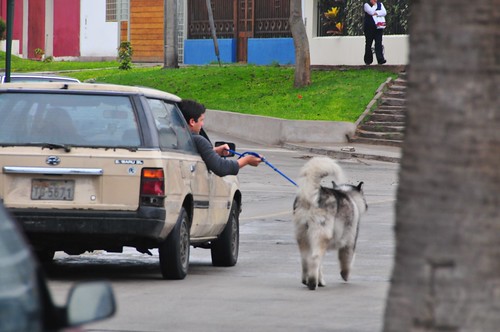
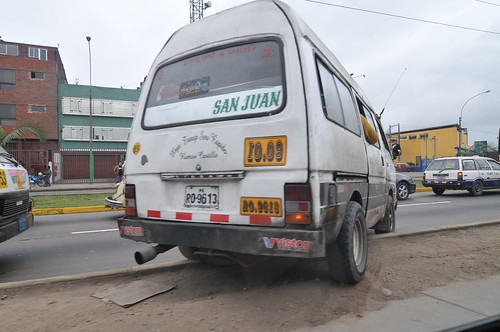
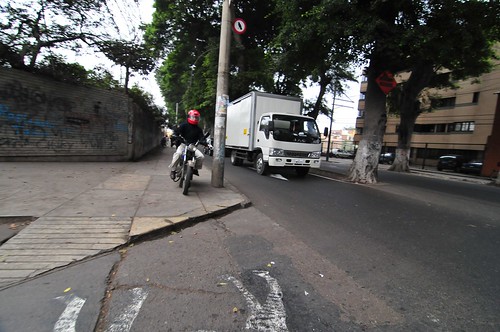

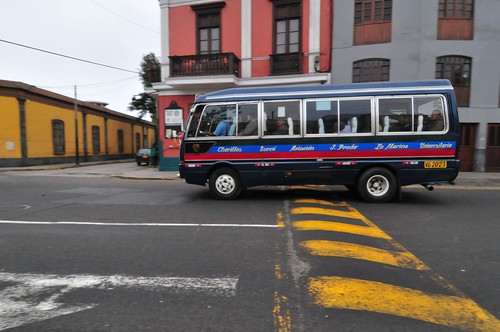
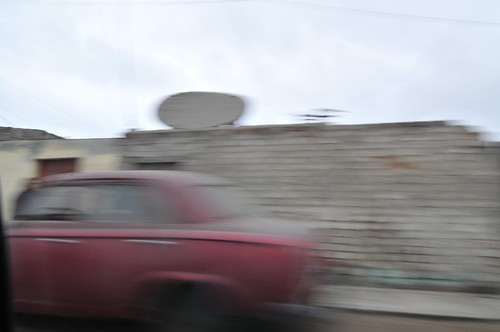
I’m always fascinated to read about driving habits around the globe, but have to confess I’m rather glad I don’t have to drive around Lima Peru for a living!
Thank you for your interesting and well illustrated post.